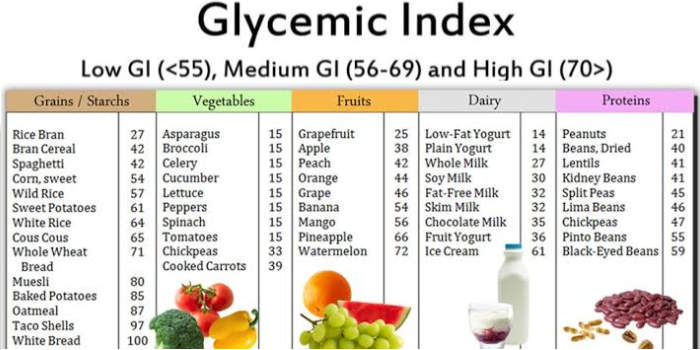Carbs can be broken down into 2 major categories, including simple sugars & complex carbohydrates. Simple sugars include mono and disaccharides.
Simple Sugars
Monosaccharides are the simplest form of carbs, which serve as the building blocks for all other sources.
- Glucose
- Fructose
- Galactose
Disaccharides are formed when 2 monosaccharides bond. These include:
- Sucrose (table sugar)
- Lactose
- Maltose
Simple sugars are present in varies natural & processed food products. Processed forms such as High Fructose Corn Syrup are known to have a negative impact on metabolic health & body weight. All processed carbohydrates found in cereals, candies, pastries, fruit drinks & desserts are metabolized just like simple sugars & are therefore associated with obesity, inflammation, and low nutrient values.
These negative characteristics come at the expense of better flavor, palatability, and or a longer shelf life. Added processed sugars can go by many names on food labels, such as dextrose, corn syrup, invert sugar, malt syrup, and many others. So it's in the best interest of an individual to learn the varies names given to these nutrients of poor quality. Sugar consumed in excess in any form does not behove optimal weight management or overall health.
Unfortunately, the average American adult consumes 22.2 teaspoons of added sugars each day. Which equals about 15% of daily calories, or roughly 355 calories a day. The American Heart Association (AHA) recommends no more than 100-150 kcals/day. But research agencies estimate Americans consume more than 150lbs/year.
People in general, especially athletes should be taught to limit their sugar intake to 10% or less of total calories at most. Excess consumption usually comes at the cost of healthful complex carbs which fuel health & sport performance.
Complex Sugars
- Oligosaccharides are composed of a small amount of monosaccharide units and are found in various plant-based foods.
- Polysaccharides also directly referred to as complex carbs, are composed of long chains of monosaccharides. These should comprise the majority of CHO intake due to their nutrient impact on health. This includes starches, glycogen, and fibers.
- Starch is a term used to describe a carb compound that contains chains of sugars that can be easily digested & metabolized for energy provision. These are foods like, pasta, potatoes, oats, beans, nuts, breads.
- Glycogen is the storage form of carbs in the body. Skeletal muscle contains 300-700g, while liver contains 80-120g. Both depending on body size and diet.
Liver glycogen is broken down to maintain blood sugar levels as needed. Muscle glycogen supplies direct energy for contractions.
- Fiber is a non-starch polysaccharide that resists digestion in the gut and comes in soluble and insoluble forms. Soluble fiber attracts water and dissolves into gel slowing the digestive process & positively impacting blood sugar management.
Examples are; oats, lentils, apples, oranges, nuts, flaxseeds, beans, peas, cucumbers, celery, carrots.
- Insoluble fiber adds bulk to stool and helps food pass more efficiently through the intestines.
Examples are; barley, couscous, brown rice, zucchini, broccoli, cabbage, green beans, dark leafy veggies, root vegetable skins (potato skins).
- Fiber recommendations are 30-40g for men, and 25-30g for women.
Blood Sugar Regulation
The body attempts to regulate blood sugar levels to limit hypo and hyperglycemia, or abnormally low or high blood sugar respectively, as either condition is potentially dangerous and limits bodily functions.
When blood sugar rises after a meal, insulin is released from the pancreas to draw the sugar into tissues for use or storage as needed. When blood sugar gets low, due to training or a long period without nutrient consumption; glucagon is released from the pancreas to facilitate blood sugar release from the liver via the breakdown of stored glycogen to reestablish blood sugar levels.
The body wants to regulate a normal level of blood glucose, which generally ranges from 70-110mg per deciliter of blood to maintain function of the neuromuscular system. Especially the central nervous system, which includes the brain & spinal cord. If the function of these systems is not maintained performance will be drastically compromised.
Glycemic response (GR) refers to the impact a food or meal has on blood glucose following consumption.
Glycemic Index (GI) is a relative measure of the blood glucose raising potential (or response) of the carb content in foods.
Glycemic Load (GL) describes the blood glucose raising potential of the carb in a food and the total quantity of carbs.

Multiply the glycemic index, by the amount of carbs in grams and divide the total by 100. Glycemic loading values can be used to measure the full response of a meal on blood sugar levels. Similar to glycemic index values, a meal is considered to have a low glycemic load with a value of 10 or less. Medium with values from 11-19 & higher with 20+
Low GI & load diets have been positively linked to reduce risk of obesity, colon and breast cancers, as well as raising healthy cholesterol. While high-GI are preferred during prolonged exercise and post-exercise when combined with protein to expedite recovery & glycogen restoration.

Summary
Carbs are critical for sport performance, as they fuel the neuromuscular system & brain. The body maintains internal carbs in the blood which transports & circulates 4-5g of glucose, the liver which maintains 25% of glycogen storage, and skeletal muscle which maintains 75% of glycogen storage. This is broken down in the body to create the energy you need to workout & function daily. If inadequate carbs are consumed, the body loses neuromuscular efficiency as well as the protein sparring mechanism defense system.
The protein sparring mechanism reflects a preference of the neuroendocrine system to spare bodily proteins for energy provision unless inadequate carbs are available to fuel the central nervous system (CNS). The loss of this mechanism forces the promotion of gluconeogenisis, or creation of new glucose at the expense of bodily proteins including muscle. Essentially, when the brain senses inadequate carbs, MUSCLE WILL BE BROKEN DOWN TO SUPPLY THE ENERGY NEEDED!!! DON'T LOSE YOUR GAINS FOLKS!! EATTTTTT YOUR CARBS.❤️

